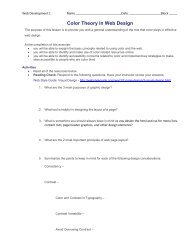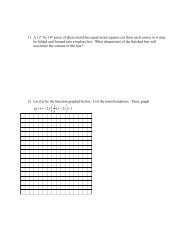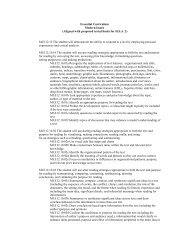PROJECT_Greek Vases + The Golden Ratio
PROJECT_Greek Vases + The Golden Ratio
PROJECT_Greek Vases + The Golden Ratio
Create successful ePaper yourself
Turn your PDF publications into a flip-book with our unique Google optimized e-Paper software.
Shellac Resist—H20 Erosion<br />
Great Relief Surfaces<br />
Flowers, abstract geometry, letters, anything -- making complex relief surfaces on your pots, tiles or<br />
sculptures is easy using shellac. This technique is especially suited to fine clays like porcelain or<br />
porcelaineous stoneware, but could be used on just about any clay.<br />
<strong>The</strong> Technique:<br />
1. You will be using shellac or polyeurathane to stencil your motif.<br />
2. Paint your designs with various brush sizes onto bone dry greenware.<br />
3. If necessary, apply a couple of coats. This will depend on the initial consistency of the shellac.<br />
4. Let the shellac dry thoroughly. If you´re in a hurry, you can use a hair dryer set to ´hot.´<br />
5. <strong>The</strong>n, carefully wipe away layers of clay in the negative space with a wet sponge. <strong>The</strong> clay will stay<br />
raised where you have applied the shellac.<br />
6. After drying, the process may be repeated for layers of various depths.<br />
7. Decorate, glaze and fire as usual.<br />
Tips:<br />
1. Be careful not to use too much water at any one time, otherwise cracks may appear, especially on<br />
thin ware.<br />
2. Further effects can be achieved by additional carving.<br />
3. Try experimenting with other nontraditional resist materials, like house paint!

















